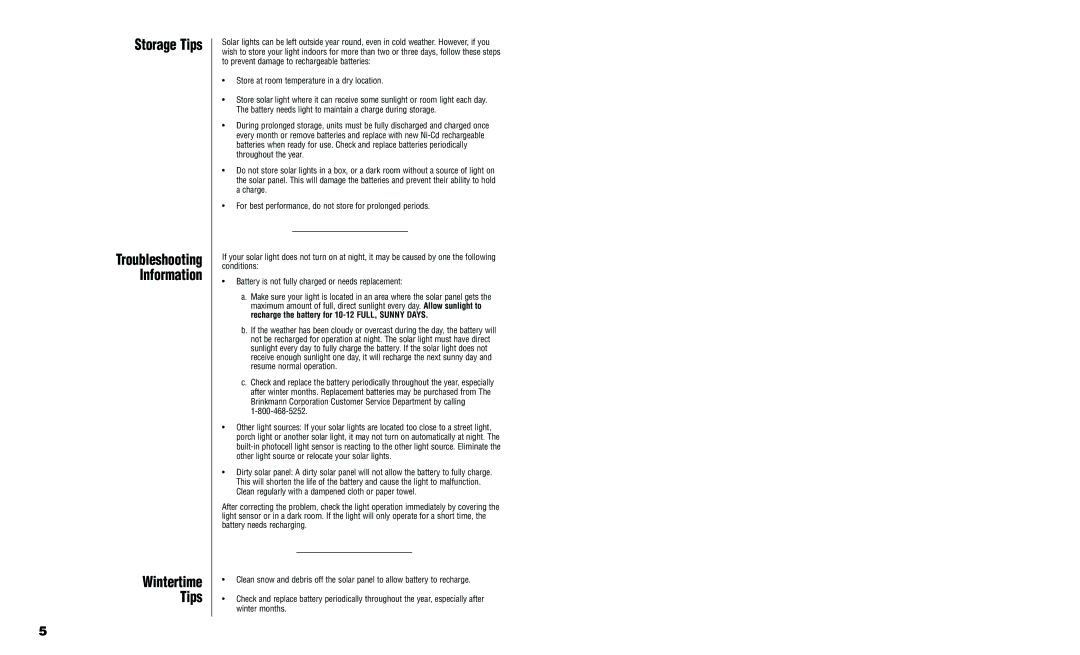
Storage Tips
Troubleshooting Information
Wintertime
Tips
Solar lights can be left outside year round, even in cold weather. However, if you wish to store your light indoors for more than two or three days, follow these steps to prevent damage to rechargeable batteries:
•Store at room temperature in a dry location.
•Store solar light where it can receive some sunlight or room light each day. The battery needs light to maintain a charge during storage.
•During prolonged storage, units must be fully discharged and charged once every month or remove batteries and replace with new
•Do not store solar lights in a box, or a dark room without a source of light on the solar panel. This will damage the batteries and prevent their ability to hold a charge.
•For best performance, do not store for prolonged periods.
If your solar light does not turn on at night, it may be caused by one the following conditions:
•Battery is not fully charged or needs replacement:
a.Make sure your light is located in an area where the solar panel gets the maximum amount of full, direct sunlight every day. Allow sunlight to recharge the battery for
b.If the weather has been cloudy or overcast during the day, the battery will not be recharged for operation at night. The solar light must have direct sunlight every day to fully charge the battery. If the solar light does not receive enough sunlight one day, it will recharge the next sunny day and resume normal operation.
c.Check and replace the battery periodically throughout the year, especially after winter months. Replacement batteries may be purchased from The Brinkmann Corporation Customer Service Department by calling
•Other light sources: If your solar lights are located too close to a street light, porch light or another solar light, it may not turn on automatically at night. The
•Dirty solar panel: A dirty solar panel will not allow the battery to fully charge. This will shorten the life of the battery and cause the light to malfunction. Clean regularly with a dampened cloth or paper towel.
After correcting the problem, check the light operation immediately by covering the light sensor or in a dark room. If the light will only operate for a short time, the battery needs recharging.
•Clean snow and debris off the solar panel to allow battery to recharge.
•Check and replace battery periodically throughout the year, especially after winter months.
5
